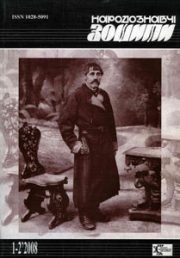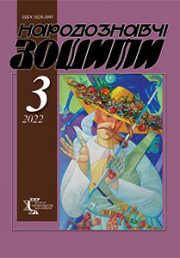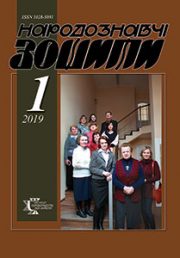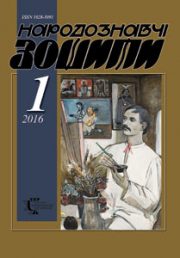The Ethnology Notebooks. 2019, № 6 (150), 1563—1571
UDK77.04.071.1(477.83-22)І.Швед(092)
DOI https://doi.org/10.15407/nz2019.06.1563
HOSHCHITSKYY Artem
ORCID ID: https://orcid.org/0000-0001-8680-2124
independent researcher,
Contacts: e-mail: artem.hoshchitskyy@ukr.net;
https://independent.academia.edu/ArtemGoshchitskuj
Abstract. Introduction: Like each kind of art, the artistic photography, despite the apparent simplicity perception, has a tendency to influence the deep, unknown parts of our soul together with pleasing us with its literality and informativity, the perfect composition, artistic taste in depicting the beautiful landscapes, traditional architecture and life and beautiful, sincere people esthetics in a simple and direct kind of way.
Problem statement: Photography happens to be complicated, sometimes even more sophisticated than painting, variety of art. Apart from its esthetic function, photography is an important type of narrative sources for ethnographers, anthropologists, local history researchers either. We’ve been witnessing some enhancement in Galician photographic art’s history studies in the recent couple of years, yet many names remain unknown nevertheless. The proposed article deals with Ivan Shved, the photographer from Urych village in Skole area, artistic heritage for the first time.
The purpose of the publication: the coverage of photographic artist biography’s key milestones together with main works cluster’s highlighting and analysis.
Thus the biographic, typological and analytical methods of research were used.
Conclusions: The publication is the first step in studying the artist’s life and heritage, i.e. the photos from family life, first and foremost; some moments from the Urych villagers social life, different moments from their everyday life and work elements of village’s architecture and the traditional clothing; the landscapes photos. Notwithstanding, «psychological» photos, based on the images of photographer’s children, which beat the clock of the «staged» photography, happen to be the collection’s gem, the real photographic art’s masterpieces. We have the ability to use Ivan Shved’s photos in a small amount: nearly hundred images attributed to him were discovered at the moment. Still even that small part allows us to recognize his works’ originality and integrity in a context of the Carpathian village’s cultural and artistic life in the antebellum epoch.
Keywords: art, photographic art, Galician photographers, Ivan Shved, Boiko region.
Received 23.11.2019
REFERENCES
Onyschenko, V. (2009). «Мalarz i zebrak» from Krynytsа. Mystetstvoznavstvo Ukrainy (Issue 10, pp. 360—364) [in Ukrainian].
Kucherenko, N. (2008). On sacral themes in Nikifor-Epifaniusz Drowniak’s creativity. The ethnology notebooks, 1—2 (79—80), 122—127 [in Ukrainian].
Rybaruk, O. (2008) The forgotten icon of Paraska Plytka-Horytsvit. Ukrains’ka kul’tura, 1, 48—49 [in Ukrainian].
Vovk, Khv. (1995). Ukrainian ethnographic and anthropological studies. The ethnographic peculiarities of the Ukrainian people (Pp. 19—218). Kyiv: Art [in Ukrainian].
Oplestinova, H. (2016). The disappeared world of the Carpathian Rusive photo of Rudolf Hulka’s charts (1887—1961). Praha [in Czech].
Hryniuk, S.M. (1995). The Land they left behind: Canada’s Ukrainians in the Homeland. Winnipeg.
Vlasenko, O., & Tkachuk, O. (2014). Frantishek Rehor and his collection of photographs from Galicia. Chekhy na Volyni: istoriia ta suchasnist’: zbirnyk naukovykh prats’ (Vol. 1, pp. 126—131) [in Ukrainian].
Valashkova N. (1999). Frantishek Rehor (1857—1899) and his ethnographic activity (with the examples of F. Rehoш’s articles from Galicia. Praha [in Czech].
Sen’kiv, I. (1995). Hutsul heritage. Works about life and art of Hutsuls. Кyiv: Ukrainoznavstvo [in Ukrainian].
Reinfuss, R. (2015). Тhe Carpathian world of Boykos and Lemkos. Foto. Lesko [in Polish].
Zapletal, F. (2015). Wooden churches in Carpathians. Foto. Uzhgorod [in Ukrainian].
Zapletal, F. (2016). Towns and villages in the Carpathians. Foto. Uzhgorod [in Ukrainian].
Krasnyk, U. (2015). Carpathian motives in Julian Dorosh’s collection (from the storerooms of the Lviv National Scientific Library’s named after V. Stefanyk Librarian Artistic Resources Research Institute). Zapysky L’vivs’koi natsional’noi naukovoi biblioteky Ukrainy imeni V. Stefanyka (Issue 7, pp. 676—681) [in Ukrainian].
Kyrchiv, A. (2007). The Galician photography’s blacksmith. Karpaty. Turyzm. Vidpochynok, 10 (22), 50—57 [in Ukrainian].
Sjuterlin, K. (1982). Retouch: When and how. Моscow: Art [in Russian].







